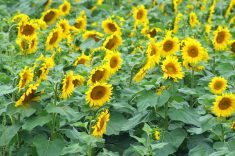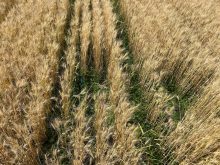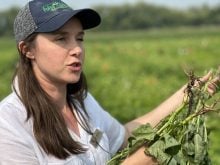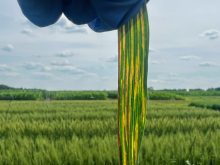Could dry beans be poised to make a comeback in Manitoba?
While it’s difficult to say with certainty, the latest Manitoba Agriculture estimates for crop production costs in the province for 2024 suggest it’s possible.
Pinto beans are ranked No. 1 in terms of profitability among all field crops, according to the guide’s budget estimates, followed by white beans at No. 2 and black beans at No. 3. In addition, pinto beans are the top-ranked crop in terms of gross revenue per acre at $950, while white and black beans are tied for second with gross revenues of $850 per acre.
Read Also

Claas brings 1000 Series SP forage harvesters to Canada
In mid-August, Claas unveiled its new line of Jaguar forage harvesters at an event in Visalia, California, deep in the heart of that state’s dairy region.
In 2023, pinto beans (81,814), black beans (30,497) and white beans (19,183) accounted for just over 131,000 of the acres planted in Manitoba, compared to just over 7.6 million acres combined for canola, hard red spring wheat and soybeans.
Dry bean acres in Manitoba have dropped considerably over the last two decades. About 310,000 acres were planted in the province in 2002, but that number began to decline as drought and other factors made some areas unsuitable.
So, could higher prices mean more acres of dry beans in Manitoba in 2024? It’s a possibility, says Dennis Lange, a pulse and soybean specialist with Manitoba Agriculture.
“Yes, that’s a possibility when you see those high numbers, but it’s all about what you make net,” he says. “But it is definitely a positive to see dry bean prices at those levels.”
Risk tolerance
Lange cautions the number of dry beans acres planted this coming season could come down to the risk tolerance of growers.
The provincial production cost estimates list pinto beans sixth, white beans fifth and black beans third on its risk ranking scale. The lower the number, the greater the risk. By comparison, soybeans are ranked 14th while canola is ranked 16th.
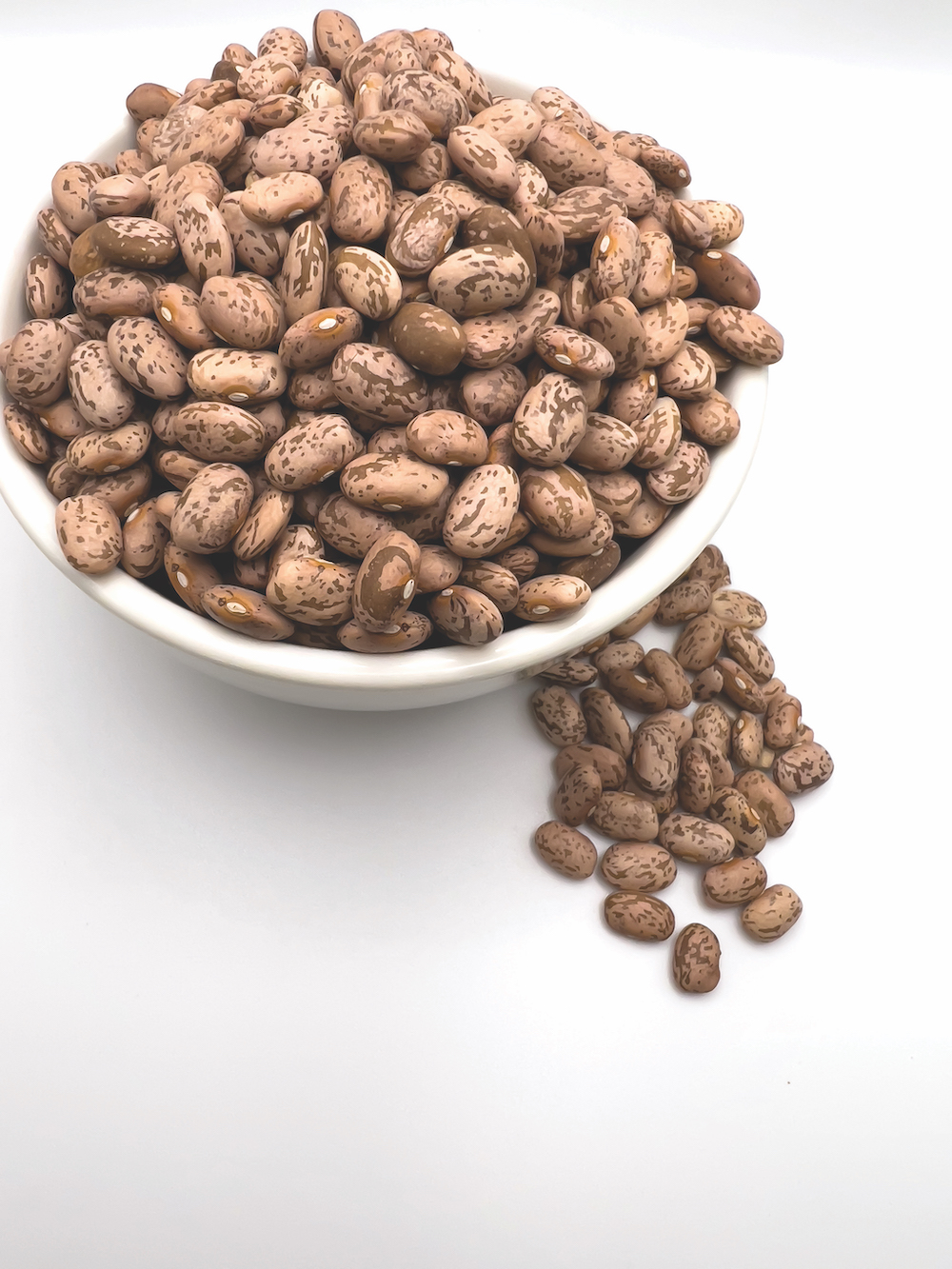
“You have to realize that if you look back the last few years, yes, we’ve had some good (dry bean) yields, but we’ve also had some really dry years like in 2021 and lower yields in that 1,300- to 1,400-pound range and that few hundreds of pounds per acre can change your profitability dramatically. Those are the risks involved with it,” he explains.
Lange says it’s important for growers who might be considering adding dry beans to their rotation — or increasing the number of acres they already grow — to consider more than just profitability.
They also need to look at the total cost to grow those various bean types, he says. For example, the total cost of growing pinto beans is estimated to be $778.95 per acre, while costs for white beans and black beans are pegged at $783.48 and $796.06 an acre, respectively.
“In the end, the numbers look good, but it’s always a matter of how much is it going to cost me to grow it,” says Lange. “Am I going to have to make any modifications to my equipment if I haven’t been growing dry beans before? All those factors kind of play into those discussions.”
Existing rotations could also play a role in whether growers choose dry beans this year. Lange says most growers typically want to maintain their rotations if they can, which means they may not have much room to alter their plans.
Still, higher prices could prompt growers who have experience with dry beans to change things up.
“Growers who are accustomed to growing dry beans and are set up for it, they may put a few more acres in if they feel that fits into the rotation,” says Lange.
Lange advises farmers to remember the numbers contained in the production cost estimates are projections based on prices from the current year and the following year — and they should plug in their own numbers for a better picture of their own operation.
Starting out
Lange’s advice to growers who may be considering dry beans for the first time is to start small.
“If you’re trying it for the first time, I would say only grow as much as you can afford to lose the first year. Some years you have really good success the first year and you wish you had more and other years you have too many acres,” he says.
Growers new to dry beans should also carefully consider which ones they choose. Lange says pinto beans are often the safest choice to start with since they have the highest yield potential, can be solid-seeded or row-cropped, and tend to be more resilient than black beans.
Another important consideration for growers who may be new to dry beans is to look at their situation at harvesttime, then work their way backward. That includes looking at the equipment they have on hand and making sure they have everything necessary to harvest beans — including a combine that won’t damage the seed.
Growers will also have to choose between row cropping or solid seeding. If they choose solid seeding, they will likely have to use an air seeder, which Lange says comes with some risks including cracking seeds which can make it more difficult to establish plant stands. If row cropping is the better options, he advises growers to make sure they have a row crop planter or can access one.
Location, location, location
It’s been said location is everything when it comes to real estate. The same might be said of growing dry beans.
The best chance for success with dry beans is in well-drained, lighter soil, Lange says.
In Manitoba, most of the dry bean receiving facilities are in the southern portion of the province, in towns including Altona, St. Joseph, Plum Coulee, Winkler, Carman, Treherne and Portage la Prairie. As a result, Lange says it’s important growers consider their proximity to those facilities — and the freight costs of transporting their harvested crops to those.
It’s also a good idea, when harvesting dry beans, to check them as they are being collected to make sure no staining is occurring. Staining can happen when beans mix with earth or green plant material as they are being collected with an auger.
Whether a grower is new to dry beans or an experienced hand, Lange says it’s usually a good idea for them to work with buyers, to choose varieties in which the buyer is interested and are suited to their growing region.
Weed control is another crucial consideration for dry beans. That’s especially true, according to Lange, in row-crop situations because growers can end up having a lot of bare ground open for a long stretch of time after spraying. Growers also must be careful of what kinds of chemicals they use to control weeds in those fields. If you’ve used some form of Lontrel herbicide on the previous crop in the field, you could have some issues if you plant dry beans the following year.
The right rotation
One last piece of advice: be careful where you place dry beans within your rotation.
Lange advises growers who have soybeans in a rotation to make sure they wait at least two full seasons afterward (that is, three years later) before planting dry beans to ensure they don’t have a problem with volunteer soybeans. Otherwise, they risk the beans becoming contaminated and difficult to market.
One example would be a rotation that includes soybeans followed by wheat in year two, canola in year three and dry beans in year four.
“Even though some of those (beans) can be cleaned out, because soybeans are considered an allergen in the dry bean industry, a lot of companies, especially when you look at white beans or navy beans, don’t want any soybean (contamination). Even half a per cent is too much.”




